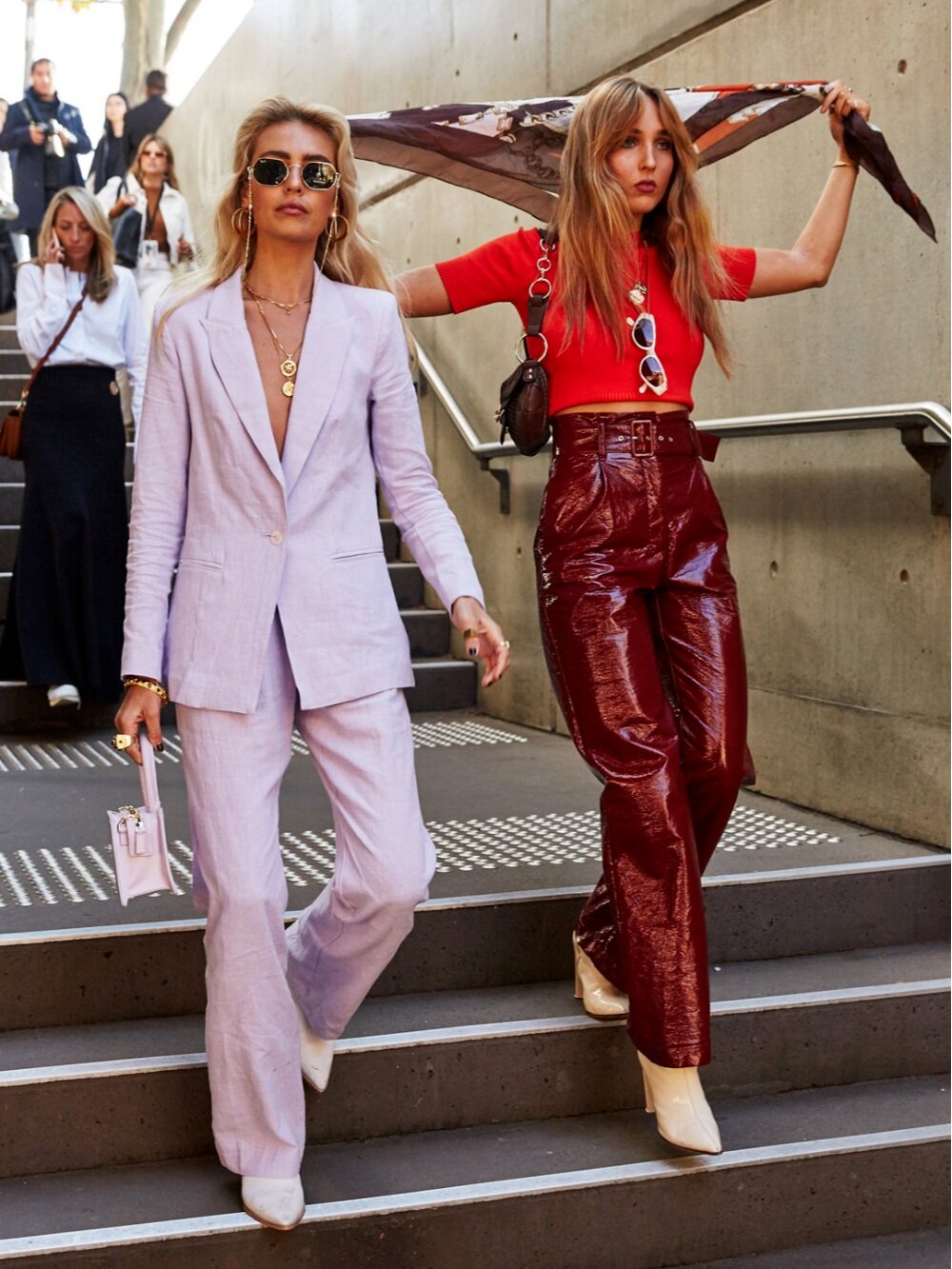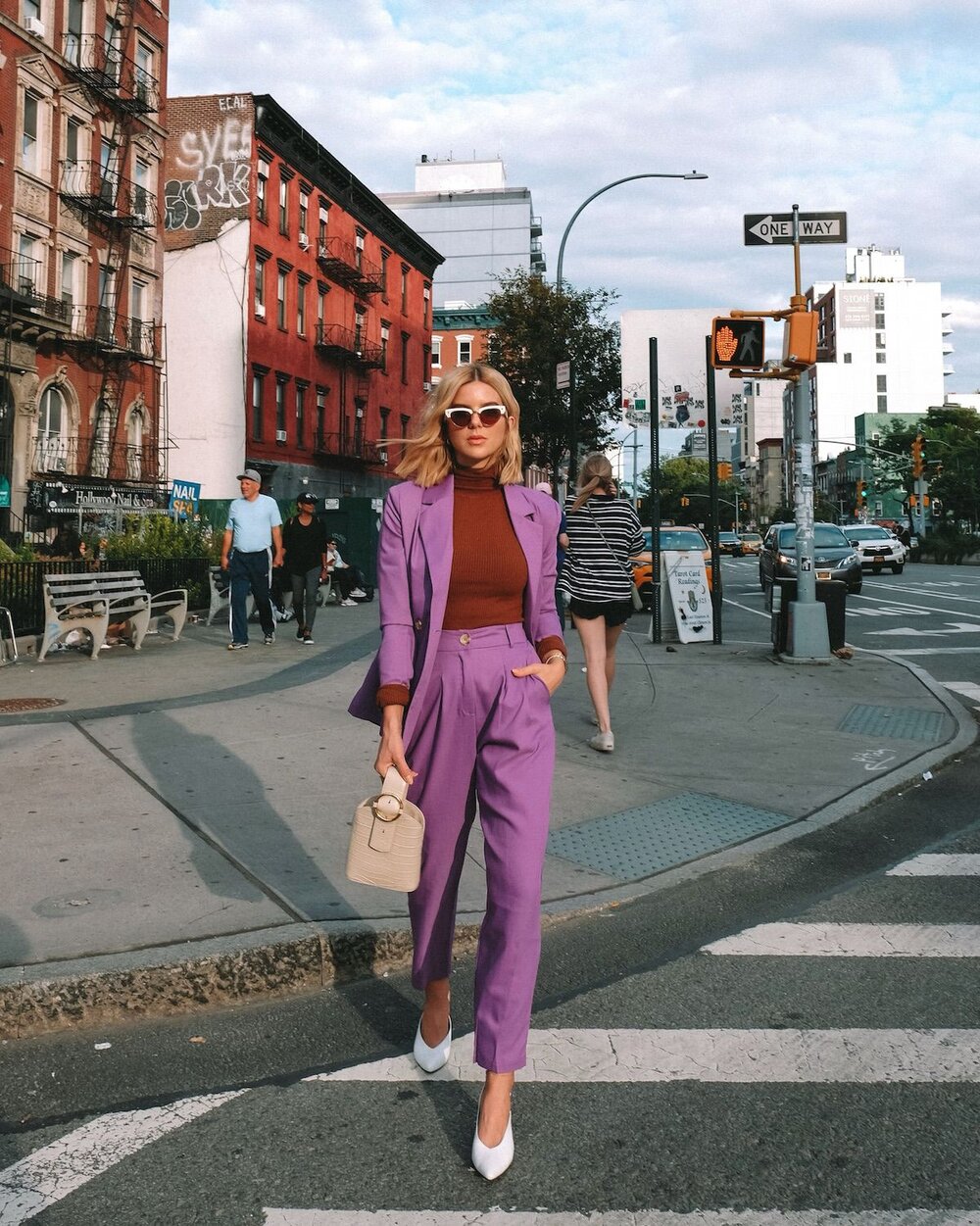Sep 23
We Need to Talk About Trend Cycles

With Second-Hand September upon us, it's the perfect time to think about how we can reduce our fast fashion consumption and value the clothes we already own. It’s also Fashion Month, when the big fashion houses present their latest collections in New York, Paris, Milan and London (with Fashion Weeks also taking place in Copenhagen, Lagos or Shanghai). New York Fashion Week alone generates 40,000-48,000 tonnes of CO2 if you include the event production, logistics, transportation and public relations (according to the CFDA). And the fashion industry at large is responsible for 1.2 billion tonnes of CO2 globally every year.
And beyond the numerical value of Fashion Month, showcasing trends is also inherently unsustainable. With every seasonal update, the previous fashion from months or years prior becomes obsolete. This steers fashion in the opposite direction of the aims of a circular fashion economy.
Everyone likes to feel confident, often this means feeling stylish and ‘on trend’, but how damaging are trend cycles becoming for the environment? As we become increasingly dependent on social media, trends are changing faster than ever, fuelling mass production and mass consumption, and we all know this does not bode well with the current climate crisis...
What are trend cycles?
The term ‘trend cycle’ describes the period of time in which a trend enters the fashion world, rises in popularity, peaks in the mainstream before becoming a complete no-go, rejected by the fashion gods. Unlike staple basics, such as the little black dress or simple dungarees, trendy clothes are often incompatible with the rest of your wardrobe, causing people to disregard them quicker than items that are a true reflection of their personal style.
What's the big deal?
Whilst trends are exciting and creative, the short life span of the majority of these fashion crazes is damaging our climate. As a result of Fashion Month and social media, so many things go in and out of fashion so quickly, causing people to purchase and disregard clothes without a second thought. People use trends as a way of fitting in and feeling good, however often this can have the reverse effect. Trends sometimes force people into wearing things they don’t actually like, but they feel they should. Girl, we know you’ve been there too- buying the same bag or shoes just to fit in at school. I't’s not your fault, but let’s try to recognise the patterns together. You got this.
Buying on trend clothes makes you susceptible to buying items without the intention of wearing them for a long time. You are more likely to wear ‘trendy’ items a few times before throwing them away or buying more on-trend clothes to replace them, trapping you in a vicious circle of consumption and waste production. As our earth continues to suffer from the mass production and waste from fast fashion, it is important we spend more time considering how on trend items fit into our wardrobe and if they have long term potential, before purchasing.
Who's the culprit?
Fashion Month is largely responsible for creating trend cycles. When upmarket brands create garments for catwalks and shows they set the tone for the season. Cheaper brands replicate their creations or design collections heavily inspired by recent catwalks, and sell their clothes at a lower price than the originals. As you would expect, people are quick to purchase the lower quality mockups, which quickly go out of style and will inevitably end up not being worn, or even worse, thrown away. As soon as the next fashion month rolls around all the previous trends are deemed out of fashion, starting a new chain of waste production and mass consumption. Trend cycles that follow this pattern are unsustainable because they cause people to make a habit of buying what is on trend, indirectly encouraging people to disregard a large proportion of their wardrobe as soon as a new trend emerges.

It is not only Fashion Weeks that have popularised trend cycles, social media playing what is arguably an even bigger role. Instagram alone is a powerhouse encouraging consumerism and following trends, especially since the introduction of their marketplace. This appears to be a conscious choice, as the Instagram team knows that a lot of people frequently check their activity (which previously lived in place of the shopping section), so by swapping the placement of the notification centre with the new shopping feature, they increase the chances of people using it by accidentally clicking on it. Social media apps are wired to encourage their users to want more and buy more, our Instagram feeds are dominated by ads tailored to our interests based on our search history, flooded with images of celebrities and influencers wearing unique and often unethical clothing.
All of this is furthermore exaggerated by influencer culture, which inherently participates in the roll out of trend cycles. Those Jacquemus bags are looking reeeeal cute, but do you really need one, or are you just trying to fit in?
Where do we go from here?
People are allowed to enjoy trends and have fun with fashion, taking instagram photos as they please and buy new clothes. What we’re really trying to get at here is that we have a duty to our planet when making purchases, that we buy with the intention of keeping them for a long time and wearing them on multiple occasions. Beyond even that, we have a duty to ourselves- don’t you just feel so much more zen when you’re surrounded by less, and everything carries intent? Is that just me?
Although, you know as well as us, we’re big big fans of swapping, borrowing and thrifting, sometimes you just really want to participate in a trend, and each of the aforementioned still require the purchase or ownership of said trendy item. This is where renting comes in. One of the most environmentally friendly, and circular ways of participating in any fun trends which tickle your fancy.
Check out our latest Instagram post, to see how we styled some of our favourite Rentals on the Whering app 👉🏼👈🏼 how would you style them?